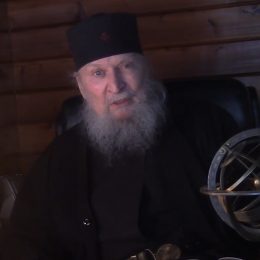AFP | March 24, 2009
Researchers at a US Navy laboratory have unveiled what they say is “significant” evidence of cold fusion, a potential energy source that has many skeptics in the scientific community.
The scientists on Monday described what they called the first clear visual evidence that low-energy nuclear reaction (LENR), or cold fusion devices can produce neutrons, subatomic particles that scientists say are indicative of nuclear reactions. “Our finding is very significant,” said analytical chemist Pamela Mosier-Boss of the US Navy’s Space and Naval Warfare Systems Center (SPAWAR) in San Diego, California.
“To our knowledge, this is the first scientific report of the production of highly energetic neutrons from a LENR device,” added the study’s co-author in a statement.
The study’s results were presented at the annual meeting of the American Chemical Society in Salt Lake City, Utah.
The city is also the site of an infamous presentation on cold fusion 20 years ago by Martin Fleishmann and Stanley Pons that sent shockwaves across the world.
[…]
Steven Krivit, editor of the New Energy Times, said the study was “big” and could open a new scientific field.
The neutrons produced in the experiments “may not be caused by fusion but perhaps some new, unknown nuclear process,” added Krivit, who has monitored cold fusion studies for the past 20 years.
“We’re talking about a new field of science that’s a hybrid between chemistry and physics.”
. . . more




Theoretically cold fusion is impossible according to the principles of Quantum Mechanics, the reason why the physicists refuse to accept the occurrence of the phenomenon.
The nuclear chemist Mitch Andre Garcia showed by very easy calculations that cold fusion occurrence is theoretically impossible, from the laws of Quantum Mechanics, in a Chemistry Blog where he is the administrator.
However cold fusion is theoretically impossible because Quantum Mechanics does not consider the zitterbewegung (zbw) as a helical trajectory of the electron (the zitterbewegung appears in the Dirac equation of the electron, but the quantum physicists did not interpret the zbw as a helical trajectory).
By interpreting the zitterbewegung from a new viewpoint, by considering it as a helical trajectory of the electron, cold fusion becomes theoreticall possible, as Guglinski has shown to Mitch Andre Garcia, along a discussion in the topic “THE DIFFERENCE BETWEEN COLD FUSION AND COLD FUSION”, which can be seen in the link:
http://www.chemicalforums.com/index.php?topic=17140.0
Look at the Guglinski’s « Reply #8 on: September 24, 2007 ».
So the chemists are now getting knowledge that cold fusion is theoretically possible thanks to the adoption of the new interpretation for the zitterbewegung, and they are undertaking the performance of cold fusion experiments, because it seems that they dont trust in the viewpoint of the physicists.
Clearly, there is a dispute “CHEMISTS vs PHYSICISTS”, and it seems that the controversy on cold fusion will be finally resolved, but not by the physicists.
The new duel chemists vs physicists has ideological origin. The physicits keep their loyalty to Quantum Mechanics, because they dont accept to change their interpretation on the zitterbewegung, since such a changing requires a very deep modification in the foundations of Modern Physics (the zbw cannot be considered as a helical trajetory in Quantum Field Theory, which is the successor of Quantum Mechanics).
Unlike, the chemists keep their loyalty to the scientific method, according to which any experiment cannot be neglected only because it defies the principles of a theory, as happens now in this duel between Quantum Mechanics and cold fusion.
Such new participation of chemists is healthy to science’s develolpment. Because as the physicists have some dogmas which they consider unsourmantable (as for instance their interpretation of the zitterbewegung in Quantum Field Theory), the development of cold fusion requires scientists free of dogmas of Physics, as the chemists.
In few words, we have to consider the following situation:
1- as cold fusion is impossible by considering the interpretation of zitterbewegung in Quantum Field Theory…
2- … but as the experiments prove that cold fusion really occurs, as confirmed now by the experiments made in the US Navy…
3- … then there is need to change the interpretation on the zitterbewegung (a new alternative that chemists probably will take in consideration starting from now)…
4- … instead of neglecting the cold fusion experiments (as the physicists insist to do).
Based on the new nuclear model of Quantum Ring Theory, a new theory is proposed to explain the results obtained by Pamela Mosier-Boss cold fusion experiment, published in last March.
See the article in Peswiki:
How zitterbewegung contributes for cold fusion in Pamela Mosier-Boss experiment:
http://peswiki.com/index.php/Article:_How_zitterbewegung_contributes_for_cold_fusion_in_Pamela_Mosier-Boss_experiment
GUGLINSKI’S THEORY ON COLD FUSION CAN BE TESTED
An email was sent to Pamela Mosier-Boss in 11 April 2009, suggesting to use an oscillator in her experiment.
The email is ahead.
From: Wladimir Guglinski (wladimirguglinski@hotmail.com)
Sent: Saturday, April 11, 2009 3:46:25 PM
To: pam.boss@navy.mil
Cc: m_bernstein@acs.org; David Hestenes (hestenes@asu.edu); EDEL PONS (canmarrai@gmail.com)
Dear Pamela
My theory can be tested by your experiment.
My idea is to use an oscillator capable to increase the oscillatory motion of the molecules D-D within the Pd lattice, by stimulating the resonance D-D.
If you succeed to stimulate the resonance D-D , we have to expect a growth in the rate of fusion D-D and also in the rate of neutrons emission by unity of time.
The oscillator I suggest is the following:
1- A glass buble is fulfilled by heavy hydrogen (D-D molecules).
The buble must be placed close to the Pd lattice deposited in the cathode.
2- Two electrodes are connected inside the buble.
3- A high voltage is applied to the electrodes, producing an electric discharge that crosses the gas of molecules D-D.
4- The molecules D-D into the buble are excited, and they emit photons in a frequency which is a sub-multiple of the frequency oscillation of the molecules D-D that fulfill the Pd lattice.
5- The molecules D-D within the Pd lattice get resonance with the frequency of emission by the D-D molecules into the buble, and the oscillation of D-D within Pd is stimulated to increase its amplitude.
6- I suppose such stimulation of resonance may increase the velocity of D-D fusion within the Pd lattice.
A SECOND ALTERNATIVE:
You can use a laser that hits the molecules D-D within the glass buble, instead of using an electrical discharge.
A THIRD ALTERNATIVE:
The best would be to build a laser which emission is produced by D-D molecules. In such case there is no need to have a glass buble, because the laser would be applied directly to the region of Pd lattice.
Perhaps you have to try the three alternatives.
It’s my opinion you should have to try it.
After all, we are in front to a new Physics, and we have to try any new idea if it makes sense.
Good luck in your attempt, if you decide to do it.
Regards
Wladimir Guglinski